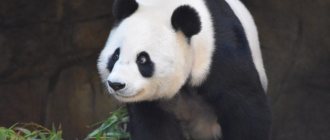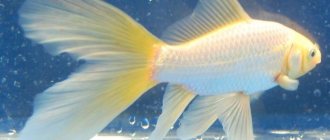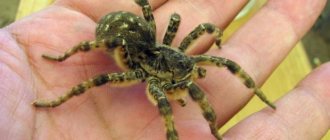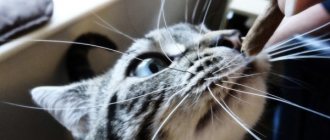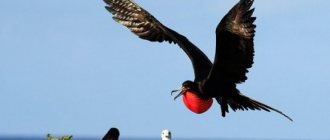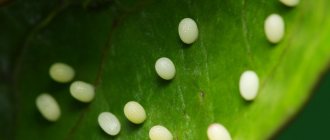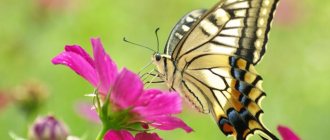Probably, any person, seeing a butterfly, involuntarily follows it with his gaze, admiring the lightness and beauty of the graceful creature. These representatives of the insect class are distinguished by enormous species diversity and live almost throughout the entire planet. The extraordinary beauty of Lepidoptera makes them one of the most beautiful creatures on Earth. Tropical and subtropical regions are famous for their especially bright and memorable butterflies, but even in more severe conditions you can find very worthy specimens.
The most beautiful butterflies on Earth
| № | Butterfly | Wingspan mm. | Habitat |
| 1 | Urania madagascarica | 70–110 | Madagascar island |
| 2 | Morpho Peleida | 95–120 | Central America |
| 3 | Sailboat Maak | up to 135 | Siberia, Far East |
| 4 | Madagascar Comet | 140-180 | Madagascar |
| 5 | Queen Alexandra's Birdwing | up to 273 | New Guinea |
| 6 | Scoop agrippina | 250–310 | Central and South America |
| 7 | Admiral | 50–65 | Almost everywhere |
| 8 | Danaid Monarch | 90–100 | North America |
| 9 | Peacock eye | up to 60 | Northern Eurasia |
| 10 | Peacock-eye Atlas | up to 240 | Southeast Asia |
Madagascar Urania
The iridescently bright color of the wings of this butterfly was recognized by the scientific community as the most beautiful in the world. A rather large butterfly with a wingspan of about 9-10 cm lives on the island of Madagascar. The fantastic wings of Urania are distinguished by their unusually smooth and graceful shape with pointed processes at the ends.
The uniqueness of the iridescent color is formed by microscopic horny scales, each of which has a unique color shade and creates an intricate pattern on a dark background. And the snow-white edging along the edges of the wings gives the pattern a finished look. Butterfly wings were extremely popular among fashionistas of the 18th century, who used them in jewelry. But the rainbow of colors also serves as a threatening warning to birds. The Madagascar beauty has enough poison in its body to poison a small bird.
Appearance
Like other insects, its body consists of three main sections: head, chest (thorax) and abdomen. Three pairs of legs are attached to the thoracic region, each of which consists of four segments. The legs of the first pair are often very weak, and therefore the butterfly keeps them folded just below the head. The butterfly's vision is relatively good, although the antennae, which are the most powerful sense organs, are much more important for it. They grow from the front of the head and are able to detect odors over a long distance. This happens thanks to thousands of tiny holes that serve as excellent olfactory organs. Butterflies use their antennae to search for food and mates. They clean their antennas frequently, keeping them in good "working" condition. Having sat down to rest on a flower, the butterfly can almost immediately begin sucking the sweet flower nectar. Why does it roll out its long proboscis, like a tubular tongue? The proboscis can penetrate deep into the base of the flower, where nectar is stored.
However, in matters of taste, the butterfly relies not only on the tongue - it can taste the leaves through the legs. By feeling the surface of the leaf with her paws, she can determine whether it is suitable for laying eggs. Sometimes it is not easy to distinguish a male butterfly from a female. But some species have clear distinctive features. For example, the male of one species of butterfly, the white butterfly, has orange markings on the tips of his wings, while the female has pure white wings. The eyes of insects consist of small eyes called ommatidia. Each ommatidium ends with a facet - a hexagonal lens. Therefore, insects see the world as a mosaic consisting of tiny hexagons. Butterflies are distinguished from other insects primarily by four large wings with a bright, memorable pattern. The color and pattern of the wings is the most important characteristic of a butterfly species. Of which there are about 140 thousand species. The front pair of legs of butterflies is shortened and covered with thick hairs - for butterflies this is a taste organ. The coiled proboscis of the sucking mouth are elongated lower jaws.
Morpho Peleida
The large, bright blue butterfly is native to Central America and surrounding regions. The span of its wings is about 12 cm. Their upper side, facing the sun, has the color of bright ultramarine, which is caused by the refraction of light waves on the surface of millions of scales. Black and white edging interspersed with red and orange spots completes the image of a “magnificent beauty” (translation from ancient Greek).
The insect uses its bright color to attract the opposite sex and for protection. The intensity and richness of the color simply scares off the birds who intend to eat the charming one for lunch. During the short period of their existence (only 2-3 weeks), male morphopeleiids group into separate flocks, which is quite unusual for butterflies. The azure beauty prefers to eat fermented fructose and loves to bask in the sun longer, even before a short flight.
Unusual cocoons
The Madagascar comet begins life as a caterpillar, hatching from one of 100 to 150 eggs. The caterpillar feeds voraciously mainly on two specific species of native plants, but many of its siblings never make it to adulthood.
The caterpillar, like most other members of the Saturniidae family, spins a silk cocoon and, having turned into a pupa, goes through another stage of development in it before becoming an adult butterfly. The surface of the silvery, sac-like cocoon of the Madagascar comet has many holes and it loosely fits around the pupating insect.
Researchers believe that holes in the cocoon are necessary in tropical areas so that when it rains, water does not remain inside the cocoon, but comes out and the pupa does not drown.
We also recommend reading:
The largest dog breeds What is domestication in animal husbandry Why you should get a cat: reasons voiced by scientists Euthanasia of animals
Sailboat Maak
The largest and most beautiful daytime butterfly in Russia is called the Blue Swallowtail. It owes its official name to R. K. Maak, a Russian naturalist and explorer of the Far Eastern regions. A large specimen of swallowtail can reach 13.5 cm in wingspan, which are covered with velvety emerald scales with dark blue tints.
These amazing lepidoptera live in Primorye, Sakhalin and the Kuril Islands. The color of butterflies differs by gender. Males have dark velvet wings with a green coating in the front, while the colors of females vary greatly and are more diverse in shades. Until now, it has not been possible to find 2 absolutely identical female specimens. Sailfish live in large flocks and present a stunning picture when the frightened ones soar upward in the form of emerald fireworks.
Life story
At night, females release pheromones into the air, catching which, males move towards them to copulate. The female and male, in some cases, may remain copulated until the next night. On each subsequent night, the female searches for host plants on which to lay eggs.
Madagascar Comet
The longest butterfly on the planet can be found in Madagascar. The unusual beauty of the nocturnal insect is given by its bright, yellow-orange wings with a span of 18 cm. Their ends end in 20 cm processes, which is why the butterfly received the nickname “comets”. These tails serve as an auxiliary balancing tool during the short flights of this amazing creature.
The life cycle of a tropical butterfly is very short - no more than 5-6 days. Moreover, it loses its unusual tails during its first flights. It is interesting that this beauty does not need food; she has no digestive organs. The insect lives off the nutrients accumulated in the caterpillar stage. And her life is so fleeting that it is not worth wasting precious time looking for food.
Description of the caterpillar
The Urania Madagascar caterpillar is yellowish-white in color with black spots and red legs. The front end of its body is painted black and has a brown head with black spots.
Immediately after hatching, young caterpillars feed only on the interveinal tissues of the leaf, avoiding the poisonous sap. After four days, they begin to eat fruits, flowers, petioles and young stems of omphalia. As the caterpillar moves, it secretes silk threads that allow it to climb back when falling.
During their development, Madagascar butterfly caterpillars cover four stages of maturation, which occur during two months of the dry season and a couple of weeks of the rainy season.
Queen Alexandra's Birdwing
This rare and beautiful insect is the world record holder among diurnal butterflies for wingspan. Its amazing wings with iridescent black, yellow and blue-green stripes can reach a span of 30 cm. Females are larger than males, but the latter are much brighter and are often subject to too much attention from collectors.
Butterflies have an active lifestyle and flutter between plants in small flocks during daylight hours. When night comes, they hide in dense foliage. The inhabitants of New Guinea are endangered due to a major volcanic eruption in the 20th century and active deforestation. The state has introduced a categorical ban on the catching and sale of king birds.
Reproduction
The female of Urania Madagascar lays eggs in groups of 60-110 pieces on the lower, and occasionally on the upper side of the omphalia leaf. The eggs are dome-shaped with protruding ribs, of which there are 16, 17, 18 pieces.
The larvae prepare cocoons from silk threads within 10 hours. Then it takes about 30 hours to prepare the caterpillar for transformation. The process of metamorphosis itself can take no more than 10 minutes, but the butterfly emerges from the cocoon only after 17-23 days.
The natives of the island - the Malagasy - called Urania Madagascar the royal spirit or noble butterfly. They believe that the souls of dead people are reincarnated into butterflies, therefore, by harming this beautiful insect, an evil person is harming his ancestors. If only every person on the planet began to treat all living things the way the Malagasy treat their butterflies!
Tizania Agrippina
The humid tropics of Brazil and Mexico are home to one of the largest moths on Earth. The vibrant twilight lover has a body length of about 9 cm and a wingspan of more than 30 cm. The intricate color pattern on its gray-white wings helps the insect blend in with the tree bark. Due to its mode of existence, this butterfly is also called the moth or Agrippina moth.
Due to the coloring of the lower part of the wing, reminiscent of bird feathers, this beautiful insect in flight looks very much like a small bird. However, to see, even just to see, a beauty in the daytime is a great success. Entomologists still do not know the details of her life, these creatures are so rare and small in number. The authorities of South American states consider the insect a national treasure and carefully protect it.
Flora and fauna of Madagascar
Madagascar separated from Africa about 160-165 million years ago, and about 65-70 million years ago from India. Thanks to the unique conditions in Madagascar, many species of animals lived and developed that were extinct in all other parts of the world. There are more than 10,000 plant species found exclusively in this area. Connoisseurs of beauty cannot help but be captivated by the thousands of different orchids of the Montagne d'Ambre National Park in the north of the island. In the favorable conditions of the Morondava region, 6 species of baobab grow, but in Africa today only one has survived. The brightest representatives of Madagascar's mammals are fossas, lemurs, tenrecs and flying foxes.
Admiral
The beauty of this butterfly is often underestimated by residents of Russia, and indeed the entire post-Soviet space. For many, this relatively small and bright insect with a wingspan of 5-6 cm has become a familiar companion of the summer season. Unique dark velvet wings with orange or red stripes and white spots have made the Admiral easily recognizable and popular all over the world.
Beautiful butterflies are real travelers. Their long autumn-spring flights to African countries and back cannot but cause admiration. The desire to see the sun and warmth is simply amazing for such miniature creatures. This species of butterfly is one of the Earth's longest-livers. Their lifespan is more than 9 months.
Race against time
When adult butterflies emerge from their cocoons, they can no longer feed on plants to survive.
Even though they have a mouth and intestines, they are not functional. Because they have no way to replenish their energy, moths only live six to eight days. From the moment the butterfly emerges from the pupa, a race against time begins - they try to find a pair for reproduction.
Females usually do little. They often stay nearby or even sit for days in the cocoon from which they emerged, simply waiting for males. Males have to look for a mate based on the pheromones released by the female. Males can sense females from many kilometers away.
Danaid Monarch
The migrant butterfly is known almost all over the world. The North American continent has the largest number of colonies of these heat-loving insects. But the love for the unknown brought these beauties to Europe, Africa and Australia. A small insect with a wingspan of 8-9 cm is capable of covering distances of 4 thousand km, reaching speeds of up to 35 km/h.
The red-brown wings of the Danaid are distinguished by a pattern of dark, clear lines. All this geometric beauty is framed by a black canvas with a scattering of white polka dots. Monarchs are extremely gentle and heat-loving creatures. With sharp temperature fluctuations with pronounced cooling, they quickly die. Migrating to warm countries, butterflies stock up on a huge amount of nectar necessary for the journey. And having reached the wintering place, the whole flock hibernates together for 4 months.
Ring-tailed lemur
The tail of the ring-tailed lemur has 13 black and 13 white stripes.
The most common species from the lemur family. Found in the south and southwest of Madagascar in dry open spaces and forests. The body length of ring-tailed lemurs is from 38 to 45 cm, and the black and white striped tail is from 55 to 62 cm. Weight can reach 3.5 kg, of which 1.5 kg is the tail. Ring-tailed lemurs feed on fruits, leaves, flowers, cacti, and occasionally insects.
Peacock eye
This beautiful representative of diurnal lepidoptera is widespread in the regions of Europe, Asia and Japan. A medium-sized butterfly with a wide and jagged wingspan of 5-6 cm slightly reminiscent of Admirals. On the main red-brown background of the wings there are 4 bright spots of color in the shape of ovals, very similar to the pattern of a peacock feather. This pattern acts as a defense mechanism, visually increasing the size of the insect in the eyes of the enemy.
A typical inhabitant of garden plots and flowering edges, Peacock's eye leads an active lifestyle. Fluttering in search of flower nectar, the butterfly is capable of making very long flights, but prefers to spend the winter in the crevices of tree bark, where it waits in hibernation for the first thaw. This insect is also long-lived, its life cycle is 9-10 months.
Tenrecs
They are also called bristly hedgehogs. Tenrecs really look like hedgehogs, but they are not hedgehogs; they belong to different orders. In total, there are about 30 species of tenrecs in nature. These nimble creatures are covered with fur mixed with bristles and needles. The smallest tenrecs are the size of a mouse. The largest ones are up to 40 cm long. During daylight hours they sleep in a secluded place, and at dusk they go in search of worms, insects, mice, and lizards. Some tenrecs look for food in the grass, others, like moles, dig underground.
Aye-aye
It is a nocturnal primate that lives in the tropical forests of Madagascar. The most unusual part of its body is its hind limbs, where the thumb is opposed to the rest so that it seems that these are not legs at all, but ah-ah hands. That's why it's called the Madagascar crayfish. Aye-aye is the size of a house cat. Its body length is 30-45 cm. The length of its fluffy tail is 50-60 cm. An adult weighs about 3 kg. The hand-footed fish feeds mainly on worms and larvae.
Aye-aye is a species that since the second half of the 1960s. is under the protection of the International Union for Conservation of Nature, on whose initiative 16 reserves were created in Madagascar to save it. After this, the number of animals began to gradually increase. By 1994, there were already about 1000 individuals.
